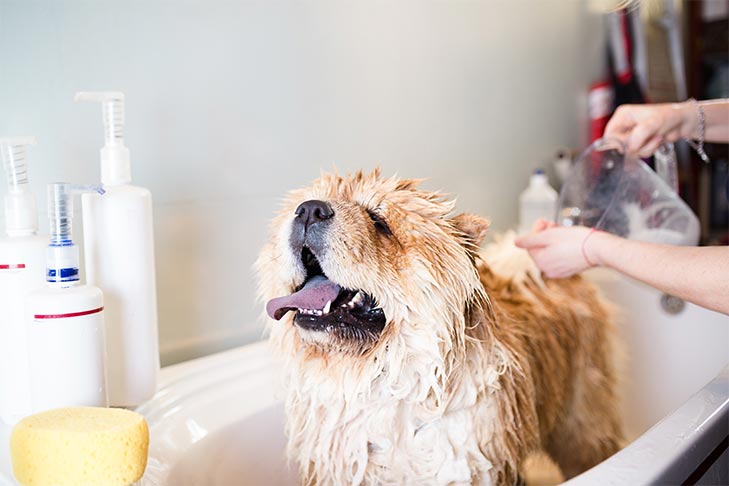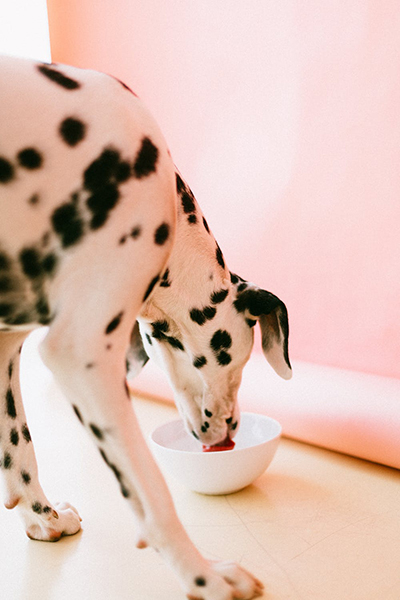We’ve all been there – you’re sitting with friends or relatives in your living room when your dog starts scooting her bottom across the floor in front of everyone. Before you cringe and shoo her into the next room, take a few steps to find out just why she is scooting, and what you can do to help her.
Scooting is a dog’s way to alleviate discomfort, itching, or pain in the anal region. There are lots of reasons why your dog may be scooting, from the minor itching to medically concerning. Educating yourself about the causes of scooting problems can help you to eliminate the behavior and address your dog’s discomfort.
Impacted Anal Sacs
Dogs have two small anal sacs on either side of the anus that contain a yucky, fishy-smelling liquid that is released when they poop. The liquid may serve as a biomarker that leaves a sort of “poop print” for other dogs.
In most healthy dogs, bowel movements trigger the anal sacs to empty. But if your dog is having unusual bowel movements or the sacs are not working properly, the fluid can build up. The glands in the sacs can become inflamed, causing the liquid to solidify and prevent its release. If the sacs are full continuously or not do not empty properly, the anal sacs can be painful and can even become infected.
It’s a good idea to visit your veterinarian if your dog scoots often. Your veterinarian can empty the sacs and check to make sure they are healthy. Antibiotic ointment and warm compresses may also be recommended.
Skin Irritation Related to Grooming
Dogs that get groomed frequently sometimes experience clipper burns and irritations from sprays, perfumes, or grooming products that get under their tail and around their bottom. Check for tiny nicks and razor burn if your dog consistently scoots after grooming.

If the itching seems to occur all over (including rolling around on their back), it may be due to a grooming product. Ask your groomer to refrain from sprays or scented products, or bring in your own oatmeal-based, sensitive-skin, hypoallergenic, or organic bath products. You can also ask that they use scissors rather than clippers round the anal area.
Dietary Allergies and Issues
Food allergies or intolerance may cause some dogs’ anal sac issues. Soft or watery bowel movements may not provide the pressure needed to empty anal sacs properly, and diet may be the cause. A diet with insufficient protein, inadequate fiber, or one that contains grains like corn, oatmeal, rice, wheat, or soy can affect stools and preventing the anal sacs from functioning properly.
Talk to your veterinarian about making dietary changes, and consider food allergies or adding pumpkin to your dog’s diet. Pumpkin can improve digestions, and, like fiber supplements in humans, can increase the regularity and firmness of bowel movements.
Anal Sacs Injuries or Tumors

It was once standard practice for groomers to “express” anal glands for all dogs by squeezing them externally. Anal sacs are delicate and can be injured by aggressive squeezing during manual expression. The glands can be damaged and become inflamed, preventing them from functioning normally. Repetitive anal gland expression can injure your dog’s anal sacs if done improperly. Dogs can also lose the necessary muscle tone to express anal glands on their own.
If your dog is NOT scooting, ask your groomer to skip anal sac expression, as it may not be necessary. Dogs who are not showing signs of irritation and who have healthy, firm bowel movements rarely need this service since anal sacs were designed to function just fine on their own.
It is a good idea, however, to ask your groomer to check to see if the anal sacks are full and if so, to notify you. You can ask your groomer to express them gently, or you can choose to ask your vet to express them and check for other problems. Many times, groomers are the first line of alert of growths, cancers, tumors and other issues, so it’s best to ask your groomer them to check the anal sacs, and only empty them if needed, and after alerting you to the problem.
Intestinal Parasites
Intestinal parasites, like tapeworms, can cause itching and discomfort, causing your dog to scoot. Dogs usually get tapeworms by ingesting fleas that carry immature tapeworm larvae. Tapeworms can cause itching and irritation around the anus as the tapeworms exit after maturing in the stomach. Symptoms of tapeworm infestation include an itchy bottom, scooting, and rice-like segments of worms exiting the anus, in your dog’s feces or in their bedding.
Visit your vet for an examination right away if you suspect parasites. Even if you don’t see worms, they still may be there. Your veterinarian can check and easily treat the infestation with dewormer.
If your pup scoots once or twice and only rarely, it may just be an itch or dirty bottom after a trip outside. You can help out by using a wipe to clean the rear after bowel movements and you may see the scooting disappear entirely. But if you notice scooting behavior more frequently, constant licking and biting of the rear area, or other signs of swelling or abnormality, take your dog to the vet right away to get to the “bottom” of the issue.

